Amelia Tavella, who has just received the title of Chevalier in the National Order of Merit, completed the rehabilitation and extension of the Convent Saint-François, in Sainte-Lucie de Tallano, Corsica, her native island. This building, built in 1480, listed as a historical monument, partially in ruins, was dormant. The young architect had to rebuild it without separating from the vestiges of the past.

Photo: ©Thibaut Dini.
“I believe in higher and invisible forces. The Convent Saint-Francois of Sainte-Lucie de Tallano, built in 1480, is part of this belief. Housed in a height, on its promontory, it was a defensive castle before being a place of prayer, of retreat, chosen by monks aware of the absolute beauty of the site. Faith rallies to the sublime”.
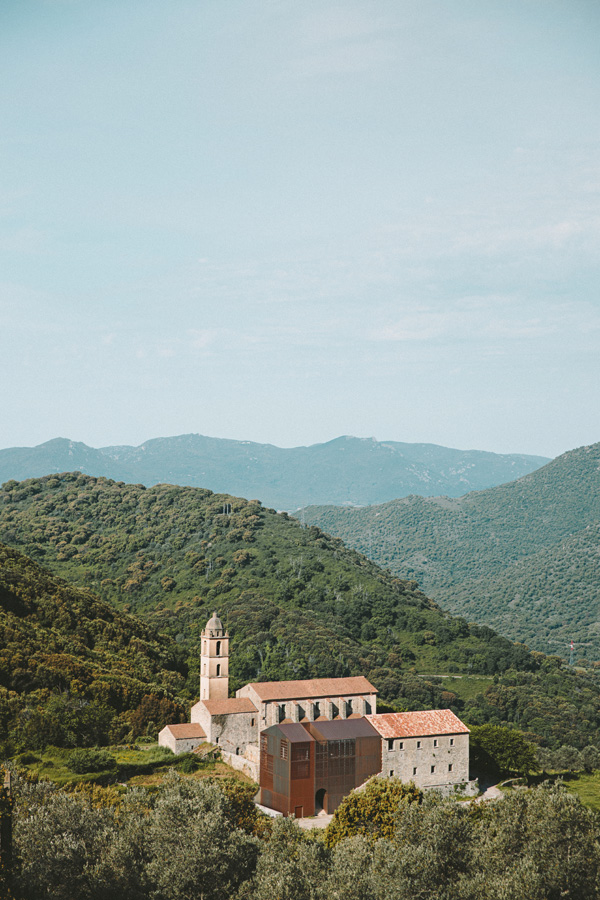
Photo: ©Thibaut Dini.

With its back to the cemetery, the convent overlooks the village it watches over. It has a front and a backstage. An olive grove is like a collar at its feet, a happy garden of heavenly food. In front of him, the spectacle of the Corsican mountains, a dizzying merry-go-round of passes and ridges that seem to move in the direction of the clouds and change their dress with the seasons. Here pulses the heart of Alta Roca.
The beauty there is religious, supernatural.
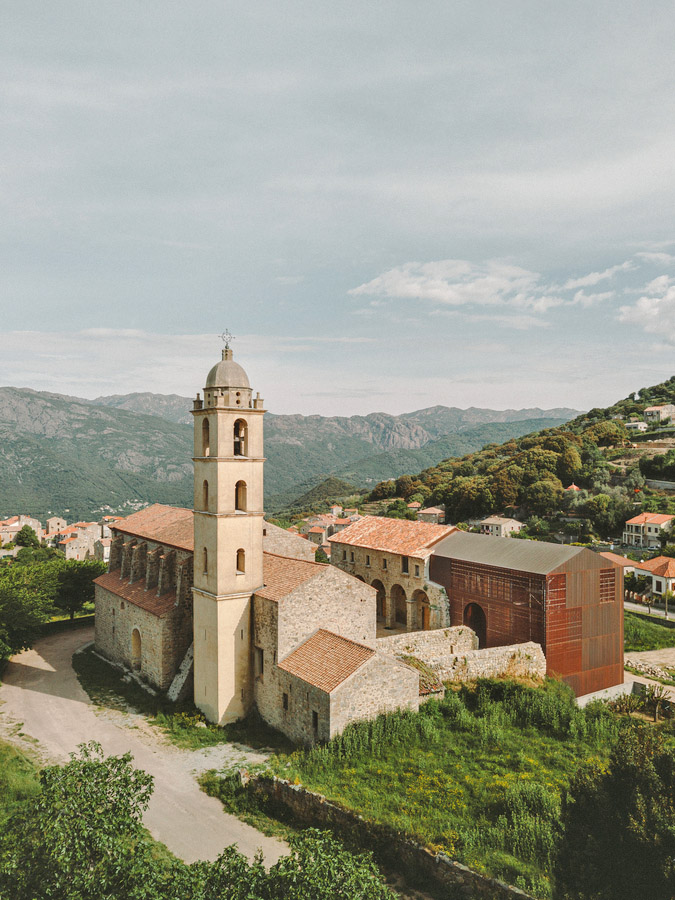
Photo: ©Thibaut Dini.


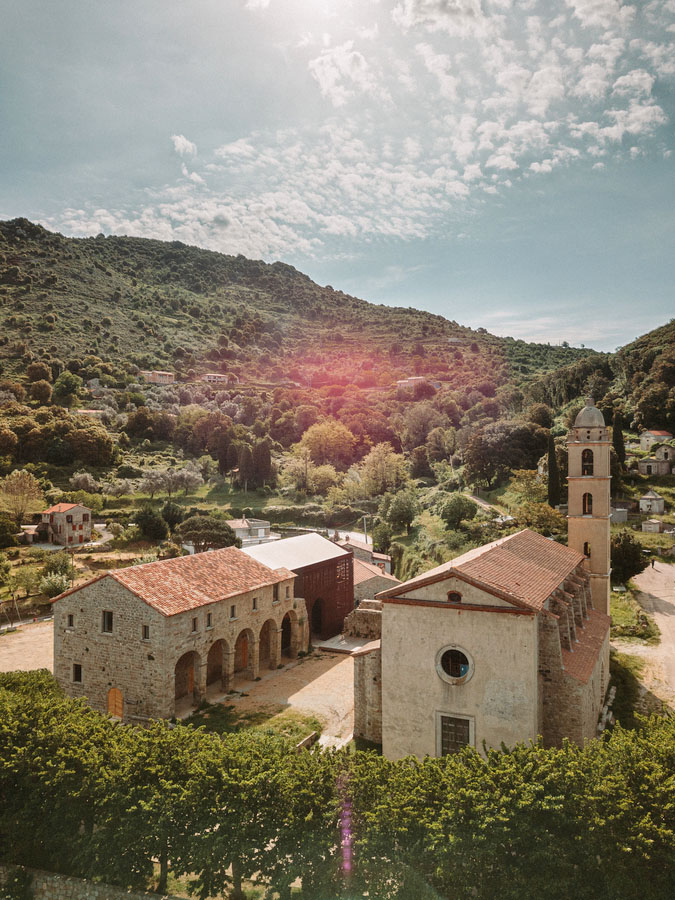
Nature has grown inside the building, Siamese nature slipped between the stones and then transformed into plant armor that protects against erosion and collapse. A fig tree is included in the facade. The wood, the roots that have become structural have replaced the lime which will not have stood the test of time. An essential component of the historic monument, Amelia Tavella has honored this nature that will have long protected the dormant edifice before its resurrection.

Second level plan.
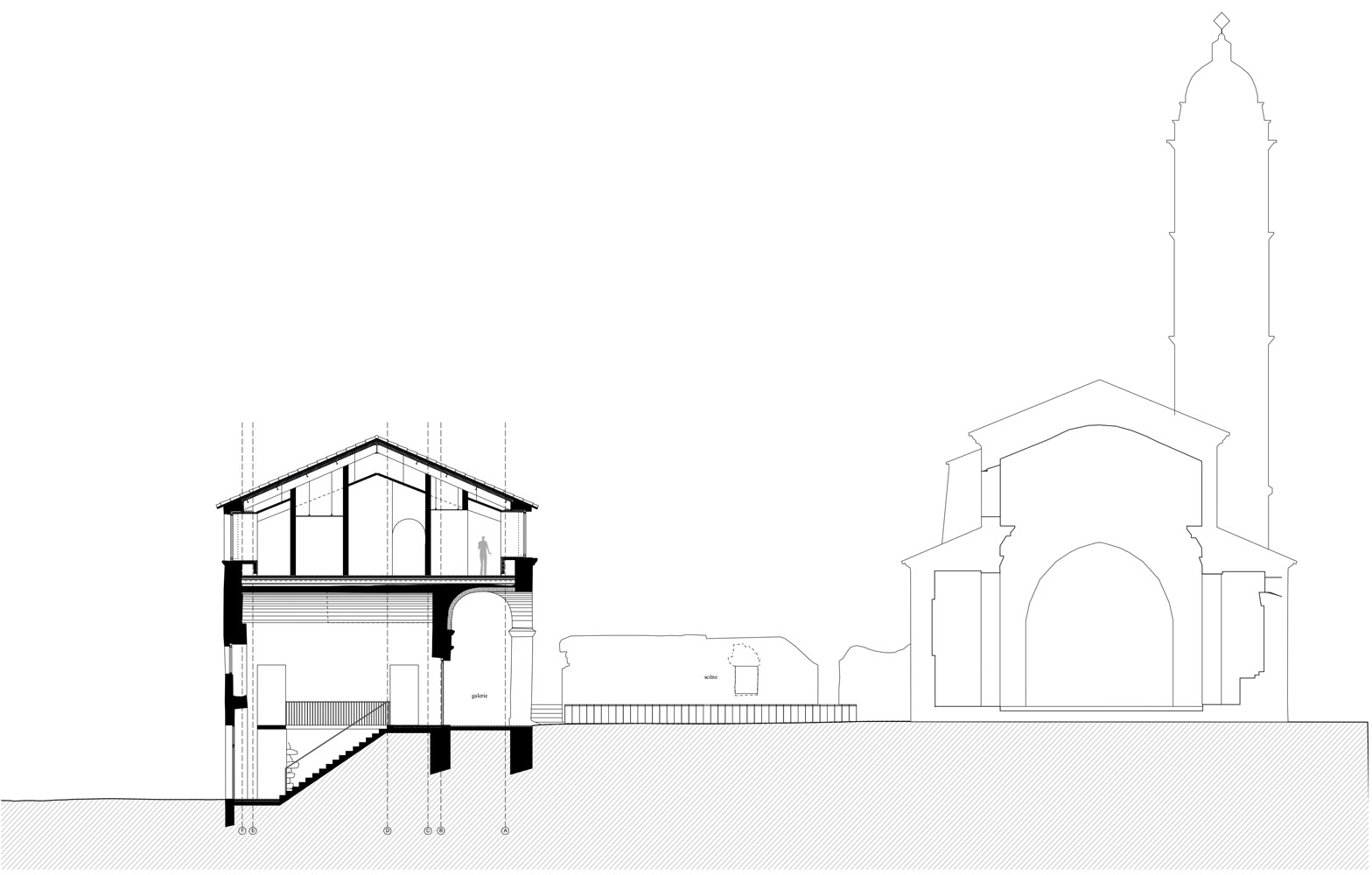


“I chose to keep the ruins and replace the torn part, the phantom part, in copper work which will become the House of the Territory.
I walked in the footsteps of the past, connecting beauty to faith, faith to art, moving minds from before to a form of modernity that never alters or destroys. The ruins are marks, vestiges, imprints, they also tell the foundations and a truth, they were beacons, cardinal points, directing our axes, our choices, our volumes”.

Photo: ©Thibaut Dini.

“Building after ruins is the past and modernity embracing each other, making the promise never to betray each other. One becomes the other and no one is erased. It is an interweaving of an older time in a new time which does not undo, which does not recompose, but which links, attaches, grabs, two unknown and not foreign parts, one of which becomes the extension of the other. in a sort of transfiguration.
I have always built this way on my Corsican island, like an archaeologist who brings together what was and what is and what will happen; I do not remove, I hang, bind, affix, slide, resting on the initial ground, on the original work: the copper reveals the stone, the monument and it sacralizes the ruiniform and poetic state”.

Photo: ©Thibaut Dini.

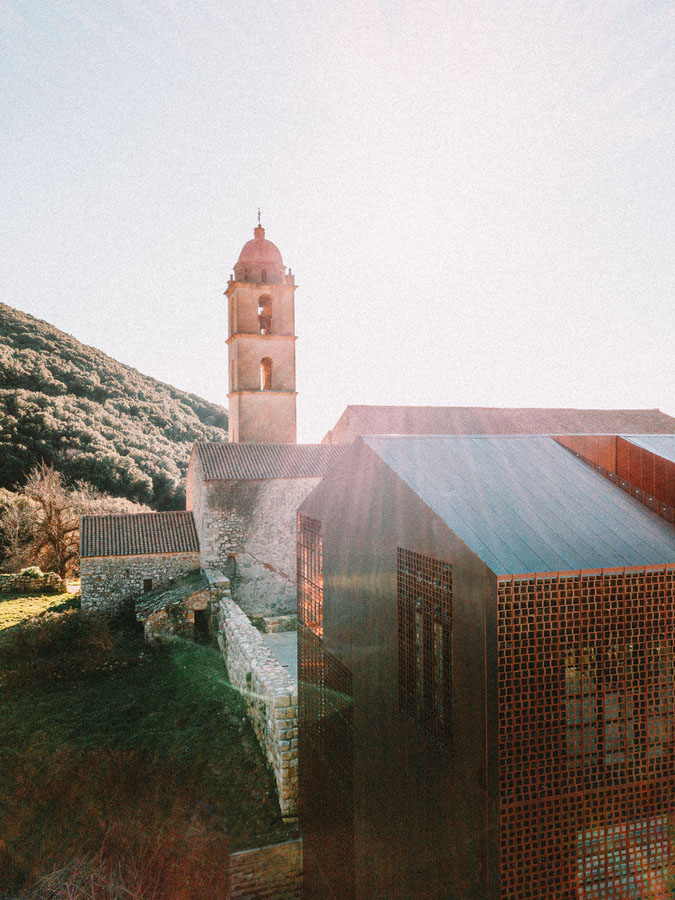
“Ruin is like an x-ray image of a polished structure undone by time. She suddenly finds herself magnified, because held by a reversible copper frame, itself doomed to transform, skate, become second skin and have a story.
I liked the idea of a possible return to ruin, that the copper could be undone – this possibility is a courtesy, a respect, to the past, to Corsican heritage.
I built the Maison du Territoire by aligning myself with the original massing. By mimicry, I reproduced the silhouette of the pre-existing building”.

Photo: ©Thibaut Dini.


“Like the mountain scene, I retraced the blueprint, concerned with a symmetry of Beauty, nothing should strike the eye. I am haunted by the obvious. Each work is a work of love. Love of the place, of the building, of its mutation as one could say of a species which transforms itself from what it has been.
The copper allowed a gesture of softness, it is feminine like stone. Unlike granite, however, it approaches its grandeur, by its preciousness and its propensity to capture the light, to reflect it, sending it back to the sky like the prayers of the monks and the faithful who address themselves to the Most High.
His moucharabiehs direct the light inward, light captured and diffused as if it were passing through the stained glass window of a church. A noble and dazzling material in the first sense of the term, copper transforms the place into an experience. The sun falls there and carries away”.

Photo: ©Thibaut Dini.






